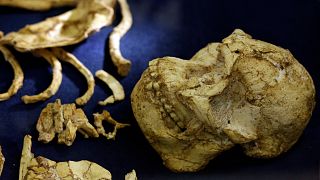Ethiopia
The fossilised remains of Lucy, one of the world’s most famous prehistoric skeletons, have left Ethiopia for display in Europe for the first time. The 3.2-million-year-old specimen, belonging to the early human ancestor Australopithecus afarensis, will be exhibited at Prague’s National Museum for two months.
Discovered in 1974 in Ethiopia, Lucy’s partial skeleton—about 40% complete—offered groundbreaking evidence of early bipedalism, a defining step in human evolution. “Her scientific value is one thing,” says Yohannes Haile-Selassie, Director of the Institute of Human Origin at Arizona State University, “but Lucy… is such an iconic specimen that she belongs to the whole world. Sharing her with the rest of the world is something that everybody would love to see and to do.”
Haile-Selassie likens Lucy’s journey to that of a “diplomat,” forging connections between people and governments. Tourists visiting her in Addis Ababa ahead of the trip expressed mixed feelings—some celebrated the chance for more people to connect with humanity’s shared history, while others argued she should remain in Ethiopia.
Lucy will be displayed alongside Selam, a fossil of a baby Australopithecus discovered in the same region and dating back even further. Czech National Museum Director General Michal Lukeš called the loan “a unique insight into the past” and a chance to deepen understanding of humanity’s roots.












Go to video
Grand Egyptian museum set for historic opening, showcasing the full legacy of Tutankhamun
01:57
Louvre jewels theft: window through which thieves entered becomes attraction
00:55
Louvre Museum closes after daring daylight jewel heist in Paris
00:58
Kenya’s Toroitich wins Amsterdam Marathon
02:20
Met museum unveils ‘Divine Egypt’ exhibition on ancient gods
00:03
Exhibition charting development of Nigerian Modernism opens at London's Tate Modern